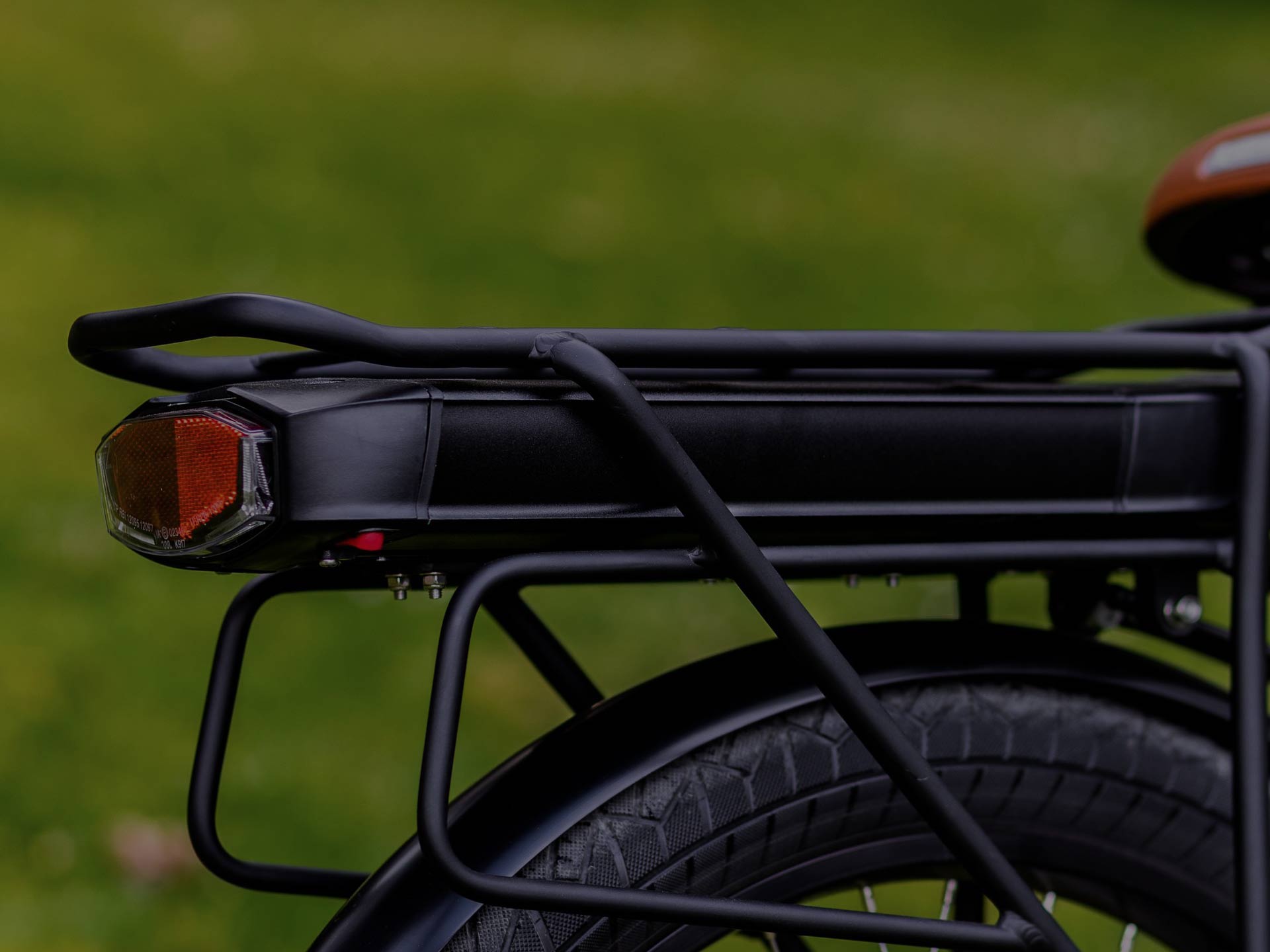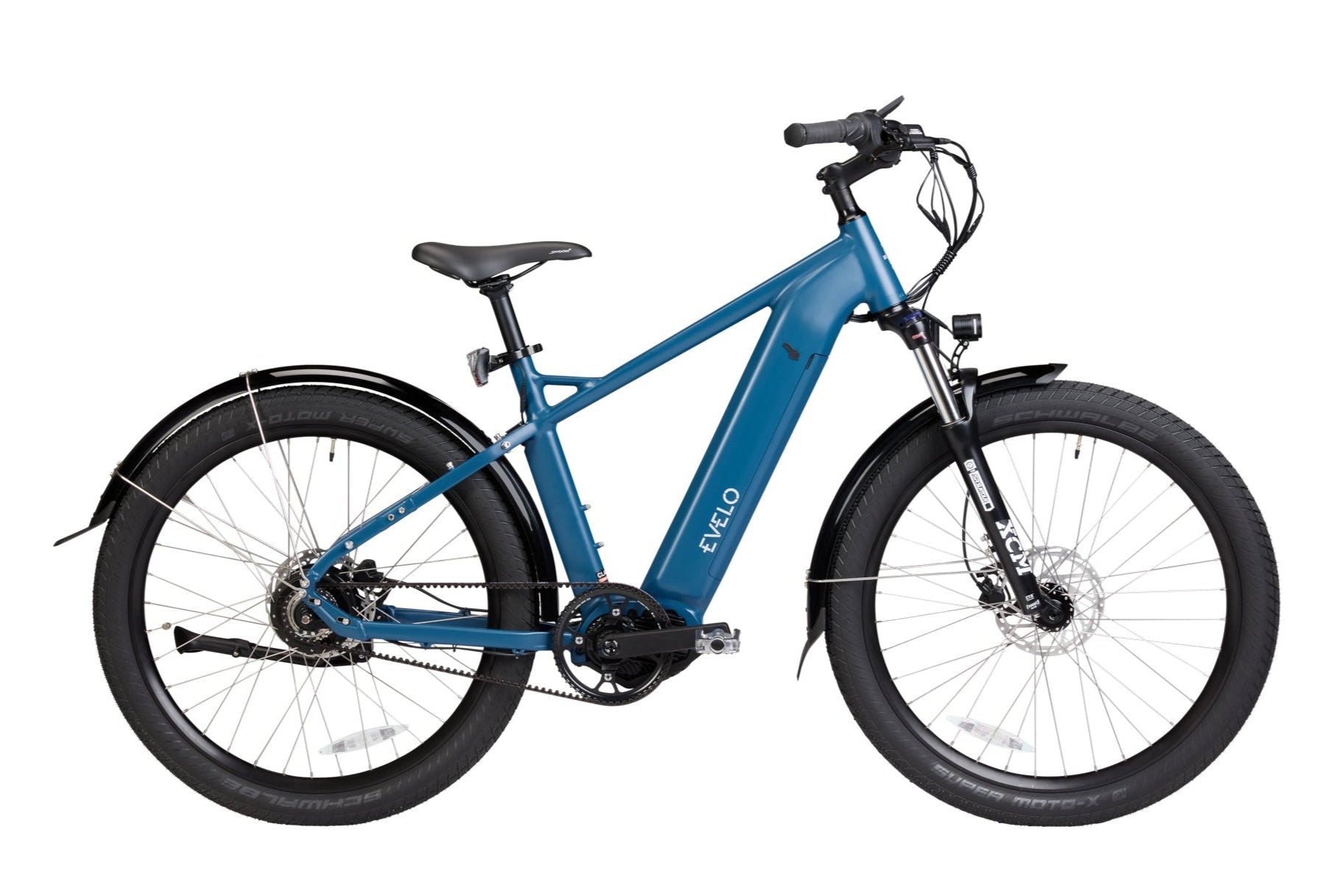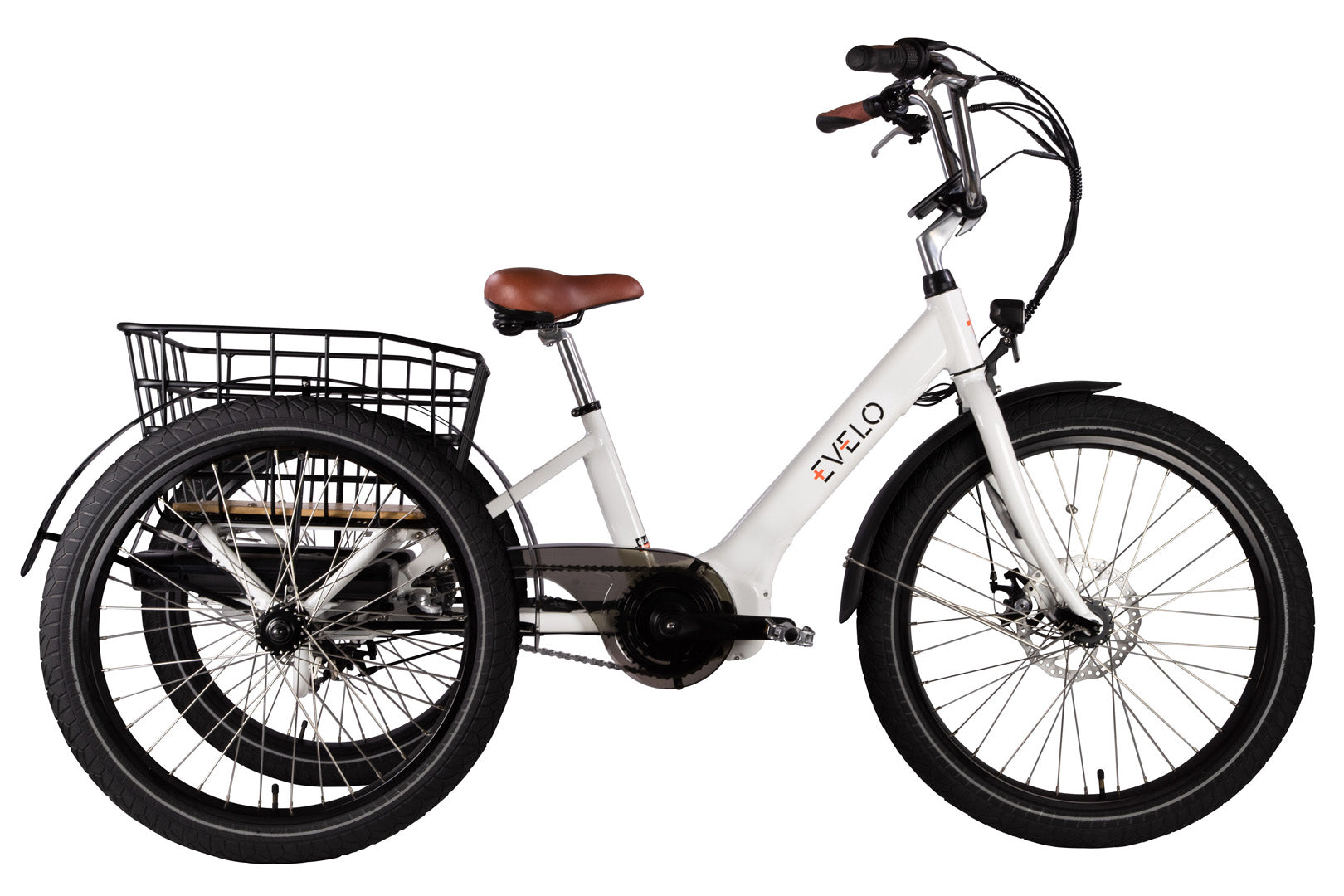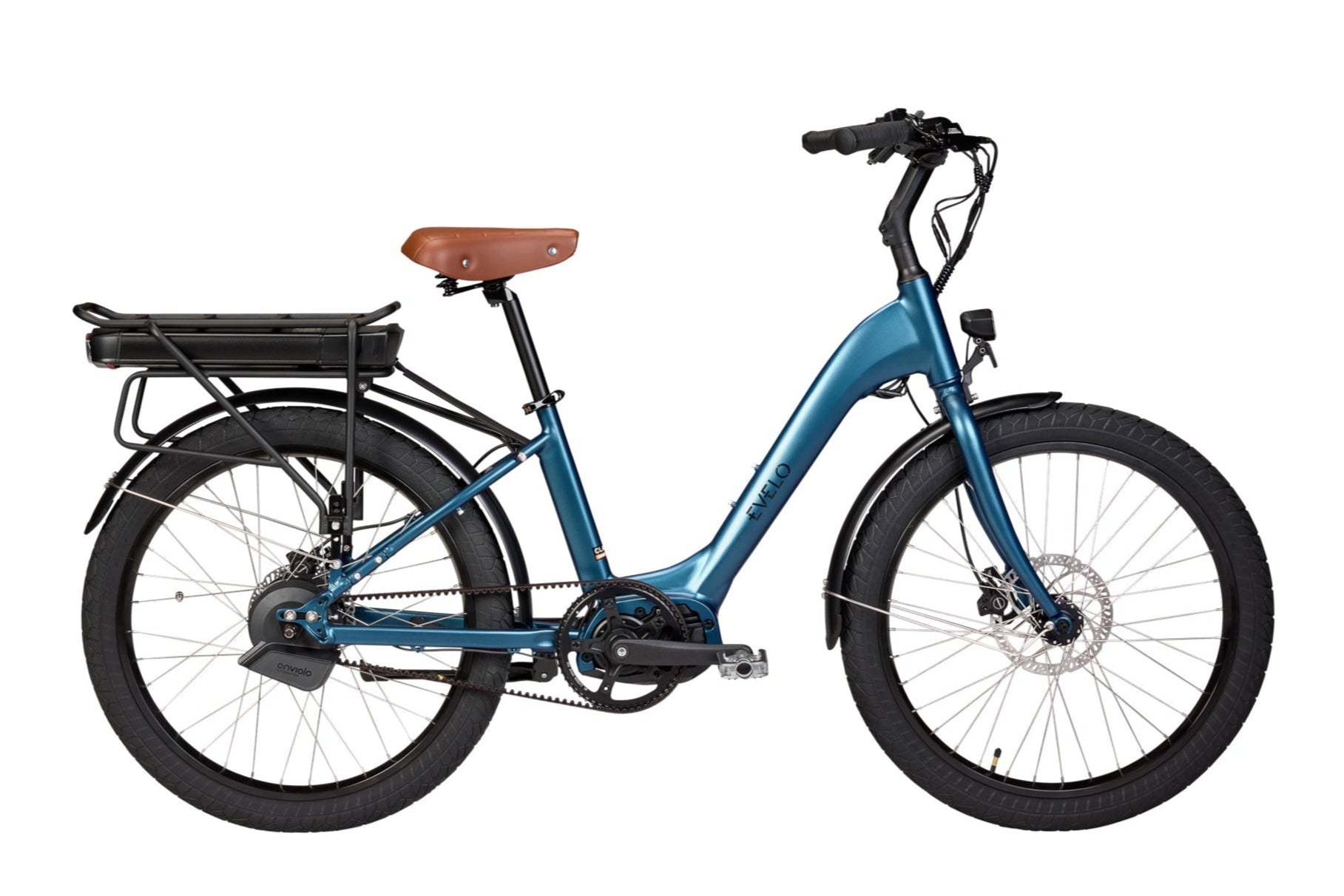PREPARING TO BUY AN ELECTRIC BIKE
PREPARING TO BUY AN ELECTRIC BIKE
At this point, you’ve become much more familiar with what electric bikes are, how they work, and why many people see them as a particularly appealing way to travel. Equipped with this foundation of knowledge, it may be time to start preparing to actually purchase an electric bike of your own. Below are some tips and pointers that will help you navigate the electric bike marketplace so you can find the right bike for you.
WHERE TO BUY AN ELECTRIC BIKE
Electric bikes have become much more widespread in the last several years and there are now more options than ever when it comes to purchasing one for yourself. If you are in a market for an electric bike, there are three types of places you can buy from - traditional bike shops, specialty electric bike shops or online direct-to-consumer brands. Let’s consider each one in turn.
Traditional bike shops - While initially resistant to the idea of an electric bicycle, many bike shops now carry at least a few electric bike models from which to choose. The two big advantages of buying through a traditional brick-and-mortar shop is that they are local and you can test ride one of their e-bikes. On the other hand, the selection is likely to be limited, compared to other channels, the value is not always there, and the store associates are unlikely to have a deep knowledge of the components and the technology.
Specialty electric bike shops - In response to the increased popularity of electric bikes, there is also a small but steadily growing number of shops dedicated entirely to selling e-bikes. If you’re interested in checking out and purchasing an electric bike from a brick and mortar shop, this is a good option. An e-bike store is likely to carry a much greater selection from many different brands and they’ll have the knowledge and expertise needed to answer your questions. They’ll also be best equipped to deal with any repairs or warranty issues that may arise.
The biggest drawback is a very limited availability of dedicated electric bike shops around the country. Major metropolitan areas are lucky to have one or maybe two electric bike shops, which means that if you rely solely on these brick and mortars, you’ll have access to only a very small range of e-bike options—you’ll see only what that store happens to carry.
Online direct-to-consumer brands - With most consumers now comfortable purchasing big ticket items online, the direct-to-consumer market for electric bikes is thriving. There are now many options to choose from and increased competition between manufacturers has resulted in a better value for the consumer than what you’ll likely to find at a brick-and-mortar bike shop. In fact, some of the most successful e-bike manufacturers in the U.S. are direct-to-consumer brands that sell primarily online.
Of course, shopping online also has its disadvantages. One potential drawback to buying an electric bike online is the difficulty of test riding a bike before you buy it. While a brick and mortar store makes it possible to immediately hop on a bike and give it a test ride, shopping online requires that you contact the manufacturer or retailer to see if they can arrange a way for you to test ride a bike. The other drawback is the paradox of choice. Shoppers can get overwhelmed with the multitude of brands, components and other options. In fact, that is the reason we’ve put together this buyer’s guide - to help you become a more educated consumer.
THE DETAILS: WHAT YOU SHOULD ASK RETAILERS
Whether you buy your electric bike online or from a brick and mortar retailer, there are a number of important questions you need to ask to figure out if a particular e-bike model is right for you. The familiarity with electric bikes you’ve gained by reading this guide will help you have meaningful conversations with e-bike retailers since you’ll go into these conversations with a strong foundation of knowledge already in place. This foundation will ultimately become the base from which you make your purchasing decisions.
When you start talking to e-bike retailers, here are the ten most important questions you should ask:
1. Does the bike have a hub motor or a mid-drive motor? As discussed earlier, the two dominant e-bike motor configurations are the rear hub and the mid-drive. The two types of motors are suited for different applications.
The mid-drive motor generates significantly more torque, resulting in more power to climb steep hills. The power also comes through the chain, resulting in a more natural feel. However, e-bikes equipment with the mid-drive motor are usually more expensive.
The hub drive motor often has a comparable power output rating but does not benefit from the torque multiplication and gearing reduction of the mid-drive motor. As a result, the hub drive e-bikes are typically less capable of climbing steep hills. That said, hub drive equipment electric bikes are more affordable and can be a good first e-bike for a new owner.
2. How powerful is the motor? The power of an e-bike motor is described in terms of how many watts it generates; most electric bike motors fall somewhere in the range of 250 - 750 watts.
In general, if you’re riding in an area that doesn’t have a lot of steep hills, if you plan on using motor assistance sparingly, and if you weigh less than 200 pounds, a 250 or a 500 watt hub or mid-drive motor should be enough to give you a great riding experience. If, on the other hand, you’ll be riding up a lot of steep hills, if you plan on using primarily motor assistance, or if you weigh over 200 pounds, a mid-drive motor in the 500 to 750 watt range is probably a good idea since it will provide the extra torque needed to quickly motor up hills and respond to changes in your riding conditions or needs. A hub motor, even with a 750 watt power output rating, might not generate enough torque to climb hills seamlessly.
3. What type of electric assistance does the bike provide? The main thing you want to know when asking this question is whether the bike offers electric assistance only while the pedals are being cranked or if it also offers a power on demand option. If you know there will be times when you want to stop pedaling and let the motor take over, then be sure the bike you’re looking at offers a full throttle mode.
4. What’s the bike’s maximum speed? In most places in the U.S., electric bikes cannot legally go faster than 20 mph, but beneath that threshold there is still some significant variance in the speeds different e-bikes can reach.
The speed you need your electric bike to travel depends on where you live, how quickly you’d like to ride, and how heavily you plan on using the bike’s motor. In general, though, e-bikes capable of hitting the top legal speed of 20 mph prove to be the most convenient and helpful, allowing riders to run errands, complete commutes, and get from here to there as quickly and efficiently as possible.
5. How do riders engage and control the motor? E-bikes come with a variety of different mechanisms for engaging and controlling the motor, including sensors that gauge a rider’s speed or pedaling torque and then trigger the motor to respond accordingly, throttles or triggers that give riders manual control of the motor, digital control panels, and any number of combinations of sensors, controllers, throttles, and triggers. Understanding exactly how any particular e-bike engages the motor is an important factor in determining whether or not it will give you the kind of riding experience you’re looking for.
6. What sort of drivetrain does the bike have? Effectively combining the mechanical efficiency of the bike’s drivetrain with the power and torque of its motor is one of the best ways to fully maximize the overall performance of an electric bike. You’ll want to know whether the bike is a single speed—which limits your ability to fine-tune your riding experience and may force you to rely more on the motor—or if it has multiple gears—which gives you a broader range of riding options and makes it easier to climb hills.
>You’ll also want to know if the bike uses a derailleur to shift through gears or if it comes with an internal-gear hub like the NuVinci. Derailleurs require riders to have a good grasp of how to shift through gears to respond to changing terrains, while something like the Enviolo NuVinci transmission offers a more seamless, intuitive approach to adjusting to changes in terrain, weather, or other factors.
7. What type of battery does the e-bike come with? Currently, lithium batteries are the lightest, most efficient, best batteries to use on electric bikes, so be sure the e-bike you’re looking at uses a high quality rechargeable lithium battery.
8. What’s the battery’s range? Once you know that the bike you’re interested in uses a high quality lithium battery, it’s important to figure out what the battery’s range is. In the electric bike industry, this is generally described in terms of how many miles a rider can go before needing to recharge the battery.
>The range of the battery you need depends on the type of riding you plan on doing. If you plan to use more motor power than pedal power, then you’ll be using your battery’s charge quicker and will therefore need a larger range. If you plan to pedal a lot and use the motor assistance only periodically, you can probably use a battery with a smaller range. The length of your rides similarly impacts the type of battery you need: if, for example, you have a long daily commute then you probably need a larger range than someone who only goes a few miles each day. In short, be sure the range of the e-bike you’re looking at will conveniently cover the distances you plan to travel.
9. How long does it take to charge the battery? This information is helpful in figuring out more concretely what the actual experience of using an electric bike will be like. This will also help you figure out if a particular e-bike model realistically fits your lifestyle and how well it meets your riding needs.
10. What sort of warranty does the e-bike come with? One of the great things about riding an e-bike is that the majority of repairs can be done quite easily using conventional bicycle parts by a mechanic at your local bike shop. However, because electric bikes also include their own unique components, most obviously the motor and battery, it’s a good idea to buy an e-bike with a strong warranty—just in case anything goes wrong. Shoot for an e-bike that comes with 3 to 4-year comprehensive warranty.
As electric bikes have proven their usefulness as incredibly efficient, convenient, quick, and fun vehicles for everything from leisurely rides with friends and family to daily commutes and weekly errands, they have become more widely available to consumers in the U.S. And while the number of brick and mortar e-bike stores is still relatively small, there is already a huge variety of e-bikes available online.
Regardless of where you end up buying your electric bike, it’s important that you know the right questions to ask before making a purchase. Doing so will ensure that when you do finally buy your own e-bike, you’re getting the one that best meets your unique needs, interests, and expectations.




